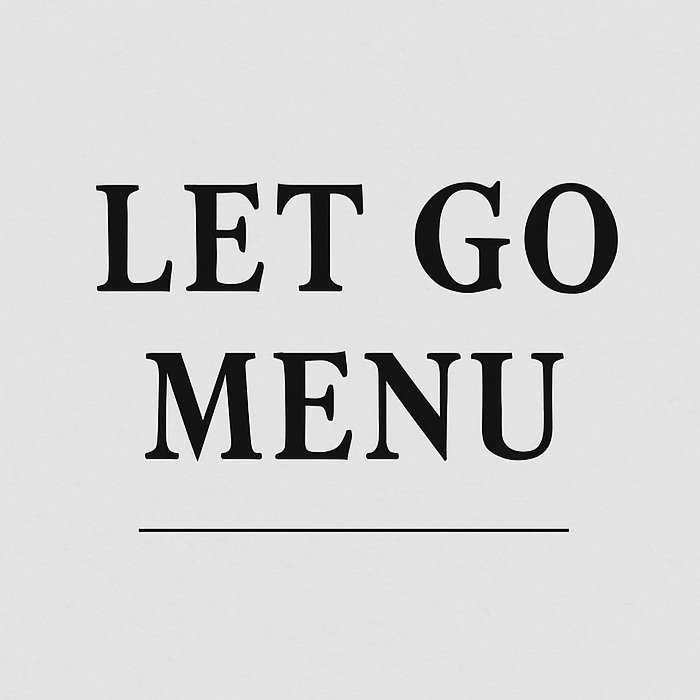The Let Go Menu: A Toolkit for Artists in Overdrive
I’ve learned that one of the hardest things for artists to do isn’t creating—it’s letting go.
Letting go of anxiety. Letting go of the fear that we’re not doing enough. Letting go of the pressure to fix, control, or prove something.
Whether you're standing in a rehearsal room, sitting at your desk, or lying awake at 3 a.m. overthinking an email, letting go is not a passive act—it’s a practice. It’s something we can choose, and like any physical or artistic practice, we get better with time.
I created a Let Go Menu—a short list of active tools that help me move through anxiety and emotional intensity when it shows up. This menu isn’t about erasing feelings; it’s about responding to them with care.
The Let Go Menu
1. Physical Reset
Sometimes, the body just needs to move to release what the mind is holding.
Shake out your hands and arms
Roll your shoulders and jaw
Do a one-song dance break to shift your energy
Mantra: “This doesn’t live in my body anymore.”
2. Breath Break
Letting go can be as simple as one exhale that says, not mine to carry.
Inhale 4, hold 4, exhale 8
Whisper “I release” on the exhale
Imagine the thought or tension dissolving with the breath
Mantra: “I breathe out the weight. I breathe in space.”
3. Say It & Seal It
Sometimes the act of naming what we’re carrying is enough to set it down.
Say out loud or write:
“I’ve done what I can.”
“This doesn’t need more from me.”
“I’m choosing peace now.”
Then close the book, tab, or room.
Mantra: “It’s okay to stop holding this.”
4. Redirect the Flow
If your brain is stuck, move your focus somewhere that says yes to your capacity.
Walk it off, even for five minutes
Do one small task you can complete
Organize something. Make something. Care for something.
Mantra: “Where do I actually have power right now?”
5. Symbolic Gesture
Create a ritual. Let the body feel the release.
Toss a crumpled note
Light a candle or blow one out
Visualize placing the thought in a box on a shelf
Hold a small stone and transfer the energy into it
Mantra: “I’ve held this long enough. I let it rest now.”
6. Gentle Reassurance
Meet yourself with the same compassion you’d offer a student or castmate.
Place a hand on your heart
Say:
“I am safe.”
“I’m allowed to be okay.”
“I trust myself to return if needed.”
Mantra: “Letting go doesn’t mean I don’t care. It means I care for myself too.”
7. Sing Frozen’s “Let It Go”
Yes, seriously. I do this. Especially when I’m stuck on something ridiculous that I know doesn’t deserve more airtime in my brain.
Belt out the chorus—especially:
Let it go, let it go
Can't hold it back anymore
Let it go, let it go
Turn away and slam the door
I don't care what they're going to say
Let the storm rage on
The cold never bothered me anyway
Laugh at yourself. Lean into the ridiculousness. It works. I feel better every time.
Mantra: “Let it go, let it go” / “The cold never bothered me anyway”
Letting go is not the absence of care—it’s an act of radical self-trust.
So the next time your body says “hold on tighter” and your mind says “spiral faster,” try saying this instead:
“I trust myself to let go. I trust myself to return if needed. I trust myself to know the difference.”
If this resonates, I’d love to know which Let Go Menu item you return to the most.
—L.

